How to Set a Sound as a Ringtone on iPhone Easily
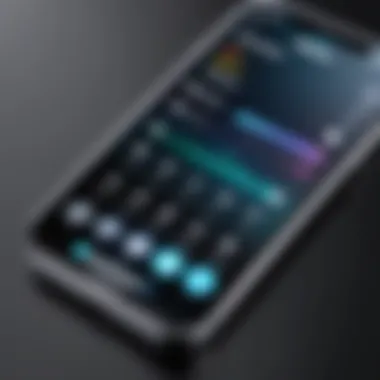
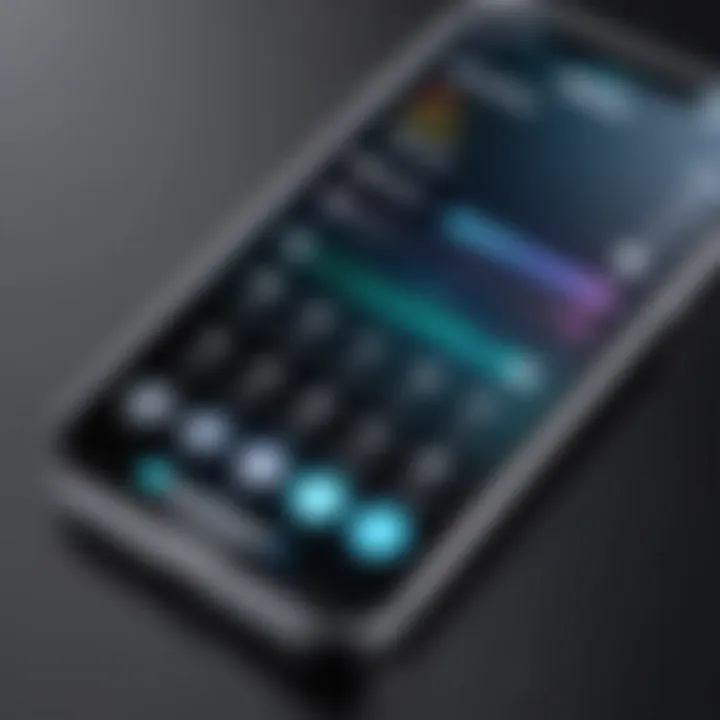
Intro
In today's world, personalizing devices is more than just a trend; it is an expression of individual identity. For iPhone users, setting a custom ringtone is one of the simplest ways to make their device reflect their personality. This guide aims to simplify the process of changing your ringtone and tailoring your iPhone experience. By understanding how to set sounds as ringtones, users can transform a typical notification into something uniquely theirs.
Overview of the Technology
The iPhone, developed by Apple, is a sophisticated piece of technology that integrates various features, including call and message notifications that can be customized. Understanding the fundamental components used in the device is essential for appreciating how customization works.
Key specifications
- Operating System: iOS is vital for functionality. It regularly updates and improves user experience.
- Audio Formats Supported: iPhone supports formats like AAC, MP3, and WAV, making it versatile for ringtone choices.
- Storage Capacity: Depending on the model, storage can range from 64GB to 1TB, allowing users ample space for ringtones and other media.
Unique selling points
- Seamless Integration: The iPhone connects efficiently with software like iTunes and GarageBand, allowing for a straightforward ringtone creation process.
- User-Friendly Interface: Apple's intuitive design enables users to navigate settings easily.
- Customization Options: Users have multiple methods to customize sounds, including purchased tones and personalized recordings.
Setting a custom ringtone is not just about changing the sound; it's about creating an experience that resonates with who you are.
Design and Build Quality
The aesthetic and practical design of the iPhone enhances its usability and appeal. Users not only want a device that operates well but also one that fits comfortably in their daily lives.
Material used
The iPhone features a sturdy aluminum and glass construction that provides durability. It helps in reducing wear and strain over time, making it last longer despite regular changes in ringtones and applications.
Ergonomics and usability
Apple pays attention to ergonomics in its design, making it easy to hold and operate the device with one hand. This design philosophy extends to the settings menu where customizing ringtones becomes a straightforward task.
Understanding these key elements enriches the overall customization experience. By the end of this guide, you will be equipped with the knowledge to personalize your iPhone, ensuring that every call you receive becomes a moment of self-expression.
Understanding Ringtones on iPhone
Ringtones play a pivotal role in shaping our interaction with technology, especially on devices like the iPhone. Understanding what ringtones are and the ability to customize them can significantly enhance user experience. Ringtones are not just mere sounds; they are an extension of personal identity and a way to convey individuality. With the increasing reliance on mobile devices, customizing ringtones allows for a more tailored engagement, making notifications more personal.
What is a Ringtone?
A ringtone is a sound used to signify an incoming call or notification on a mobile device. It can be a simple tone, a piece of music, or any sound the user prefers. An iPhone, for instance, comes with myriad pre-installed sounds ranging from classic tones to modern melodies. These sounds serve not only as alerts but also as a reflection of personal taste. The versatility in ringtone options can cater to various user preferences, making each interaction with the device more unique.
Why Customize Ringtones?
Customizing ringtones offers several advantages. Firstly, personalization enhances user experience; a distinctive ringtone can be a means of self-expression. You can select sounds that evoke memories, signify special occasions, or simply reflect current moods.
Secondly, customized ringtones help in easily identifying calls or notifications without checking the phone visually. For example, a specific tone for work-related calls can be distinguished from personal calls. This feature helps in managing priorities effectively.
Moreover, the process of creating and setting custom ringtones has become more accessible with tools like iTunes and GarageBand. As a result, users can invest time in creating a sound that not only resonates with them but also enriches their daily interactions with their iPhones.
Required Tools and Applications
The process of setting a sound as a ringtone on your iPhone requires specific tools and applications. These resources streamline the task and ensure precise customization. Utilizing the right tools not only enhances the user experience but also guarantees compatibility with the iPhone's operating system. This section focuses on important elements regarding these applications, benefits they provide, and considerations to keep in mind when selecting them.
iTunes Overview
iTunes, once a staple for music management on Apple devices, is essential for creating and managing ringtones for iPhones. This application allows users to organize their music library and transfer files to their devices. The importance of iTunes lies in its capacity to convert audio files into formats compatible with the iPhone. Specifically, it supports the m4a and m4r formats that are required for ringtones. Customizing ringtones through iTunes is a straightforward process, which is valuable for those seeking a familiar interface on their desktop or laptop.
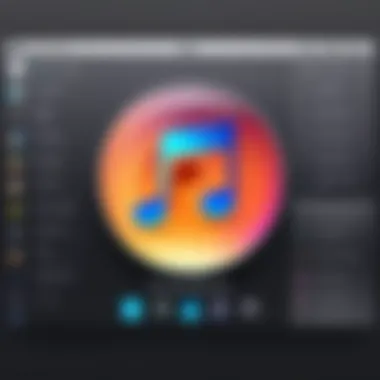

GarageBand for Ringtones
GarageBand is an advanced application designed primarily for creating music, but it also serves as an excellent tool for crafting ringtones. For users who appreciate music production, GarageBand provides an intuitive platform to edit and manipulate sounds directly. It allows for the implementation of various effects and adjustments, making it possible to create unique and personal ringtones. The advantage of using GarageBand is the level of creativity it affords; users can compose their own tunes or modify existing ones seamlessly. However, it requires a bit of learning to utilize all features effectively.
Using iPhone Settings
The settings on your iPhone offer a straightforward way to customize ringtones using built-in sounds or those created via iTunes or GarageBand. Users can access a list of default ringtones, making it easy to select an option without needing any additional software. However, the customization options are limited here. If you want unique sounds not found in the default library, you will still need to rely on iTunes or GarageBand. The built-in settings serve as a convenient option for basic needs but may not satisfy those looking to personalize their devices further.
Using these tools effectively can transform how you experience notifications and calls.
Understanding these applications and their features is crucial in the journey of setting a sound as a ringtone on the iPhone. Each option provides distinct advantages and serves different user needs, whether it be simplicity, creativity, or advanced functionality. Selecting the right tool can enhance personalization and make your iPhone experience more enjoyable.
Setting a Ringtone via iTunes
Setting a ringtone via iTunes is an essential method for customizing your iPhone experience. This approach allows you to utilize existing sound files, or even your favorite music tracks, transforming them into unique ringtones. Unlike other options, iTunes facilitates a more organized method to manage these sounds and offers a straightforward path to set and sync them on your device.
When you set a ringtone via iTunes, you gain the advantage of tailoring your notifications to reflect your personal style and preferences. Further, this method integrates seamlessly with your existing Apple ecosystem.
Preparing Your Sound File
Choosing the Right Format
Selecting the appropriate file format for your ringtone is crucial. iTunes primarily supports formats such as MP3, AAC, and M4A. Among these, M4A is often considered a beneficial choice. It offers high-quality audio with relatively small file size, optimizing storage while maintaining a clear sound.
A key characteristic of M4A is its efficiency. This format can compress audio without significant loss of quality, making it a popular option for ringtones. M4A files can easily be converted from other formats using simple software tools, adding another layer of convenience.
However, not all devices universally support every format, so it is wise to ensure compatibility. This can be a disadvantage if you plan to share your tones with non-Apple devices.
Trimming the Audio File
Trimming the audio file is a vital step in ringtone creation. Often, songs contain extended parts that are unsuitable for notifications. This process allows you to focus on the most recognizable or enjoyable section of the track, making it instantly distinguishable when your phone rings.
The primary benefit of trimming is enhanced user experience. A well-trimmed audio file, ideally around 30 seconds, fits perfectly into the ringtone duration that Apple recognizes. Moreover, trimming helps to keep the file size manageable, further simplifying the syncing process.
On the downside, if not carefully trimmed, you might lose the essence of the desired sound, making it less effective as a ringtone.
Importing to iTunes
Adding the File to iTunes Library
The first step in importing sounds to iTunes involves adding your audio file to the iTunes Library. This action is vital, as the library serves as the primary content hub in iTunes. By organizing your files here, you are setting a foundation for syncing them to your iPhone later.
A key aspect of adding files is the simplicity of the function. With a straightforward drag-and-drop action or via the menu, you can easily include your audio files. This ease of use contributes significantly to its popularity among users.
However, if the audio file is located across multiple devices, you may face challenges in accessing it quickly. Ensuring all files are accessible can require extra management on your part.
Syncing Ringtones with the iPhone
Syncing ringtones with the iPhone is an integral step after adding audio to iTunes. This process transfers the selected ringtones to your device, allowing you to utilize them effectively. The syncing feature is designed to keep your sounds updated with any new additions you make in iTunes.
The characteristic of automatic syncing can greatly enhance the user experience. Once set up, iTunes remembers your preferences and keeps your ringtones fresh without needing repeated manual transfers.
However, the syncing process can sometimes overwrite existing tones if not managed properly. This requires users to be cautious and frequently check settings to avoid losing previously set ringtones.
Setting as Default Ringtone
Navigating to Settings
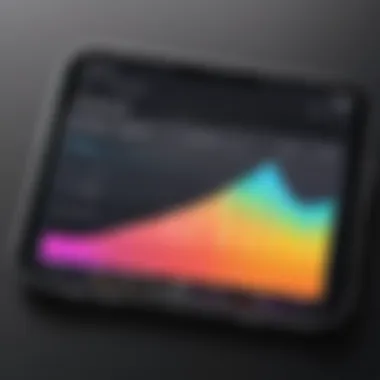
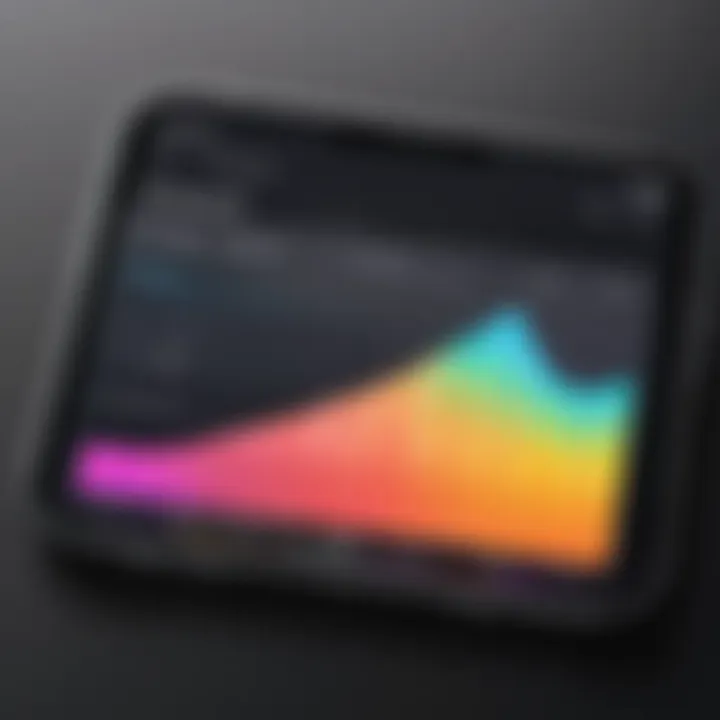
To set your newly created ringtone as the default, you must first navigate to the Settings app on your iPhone. This step is straightforward and essential, as it allows you to manage all sound preferences in one place. The organized structure of the Settings app makes it easy to locate the sound options.
One of the main benefits of this navigation process is its straightforward nature. Even less tech-savvy users can follow a few simple steps to personalize their devices.
Nonetheless, the myriad of options in Settings might feel overwhelming. Ensuring you select the correct item requires extra care.
Selecting Your New Ringtone
The final step is selecting your new ringtone from the available options in the Sound settings. This action solidifies your choice, making the personalized sound an integral part of your phone experience. The user-friendly interface guides you through the selection process.
This part of the procedure is beneficial as it allows experimentation. You can listen to different sounds and make quick adjustments before finalizing your choice.
However, it may be difficult to initially identify your newly imported ringtones among the many pre-installed options. Careful management of your library will help mitigate this challenge.
Creating Ringtones with GarageBand
GarageBand is a powerful tool that allows iPhone users to create custom ringtones. It provides flexibility over the audio editing process, enabling users to craft a sound that reflects personal taste. This method stands out because it not only allows for sound trimming but also for deeper audio manipulation. With GarageBand, you can create something entirely unique.
Importing Audio into GarageBand
To begin, you need to import your desired audio file into GarageBand. This process is straightforward. Users can import files from various sources, such as their music library or external cloud storage. Once you have the audio file, open GarageBand, select a new project, and easily drag the file into the workspace. The ability to import different formats means a diverse selection of sounds is available for customization.
Editing Your Sound
Editing is crucial in shaping your ringtone to sound just right. You can trim the audio, change the length, and even adjust how it fades in and out, which ultimately enhances the listening experience of the ringtone.
Adjusting Timing
Adjusting timing focuses on the precise placement of sound clips within your ringtone. This feature allows you to set where sounds begin and end. By tweaking the timing, you can eliminate unnecessary silence or extend certain parts for emphasis. This is useful because a well-timed clip can better fit the intended ringtone length, ensuring that it plays smoothly without abrupt cuts. Timing adjustments are a popular technique among users aiming for perfection, as they can make a significant difference in sound quality.
Adding Effects
Adding effects can elevate your ringtone from ordinary to exceptional. GarageBand offers a range of audio effects, such as reverb, echoes, and filters. Incorporating these effects allows for a more dynamic sound that can cater to personal preferences. This aspect is beneficial as it provides an opportunity to be creative. However, it's essential to use effects sparingly; excessive modifications can detract from the original audio quality.
Exporting as Ringtone
Once editing is complete, you need to export your project to save it as a ringtone. The export feature consolidates your work into a format suitable for iPhone settings. This step is crucial, as it directly affects how the ringtone will function on your device.
Process Overview
Exporting consists of a few simple steps. You will select the option to share or export within GarageBand. After that, you specify the format for the ringtone. This method ensures that your customized sound is compatible with your iPhone. The efficiency of this process is one of the advantages of using GarageBand, as it seamlessly integrates with iOS devices.
Saving to iPhone
Finally, saving your ringtone to the iPhone is straightforward. After exporting, you can send it directly to your device via iCloud or connect through iTunes. The ability to transfer files between applications makes this a user-friendly choice. It is a satisfying moment when you see your creation appear in the ringtone settings of your iPhone, ready to be selected.
Creating ringtones using GarageBand empowers users to explore their musical creativity and personalize their devices with unique sounds.
Using Built-in Sounds and Customization
Using built-in sounds and customization features on the iPhone provides an easy pathway to personalize the device's notifications and ringtones. The native sounds can be an excellent option for those who prefer not to complicate the process with custom audio files. Utilizing these built-in options can save time and ensure that notifications are distinct without the need for external applications.
Additionally, customizing default sounds creates a personal connection to the iPhone experience. It is vital to explore these sounds thoroughly, as there are various tones designed for messages, calls, and alerts. The quick access to these selections encourages users to personalize their devices to reflect identity and style.
Choosing from Default Ringtones
The iPhone comes with a variety of default ringtones. Each tone is crafted to represent different moods and occasions. To choose a default ringtone, the user navigates to Settings > Sounds & Haptics > Ringtone. Here, a list of available tones appears, ranging from classic alerts to more modern sounds.

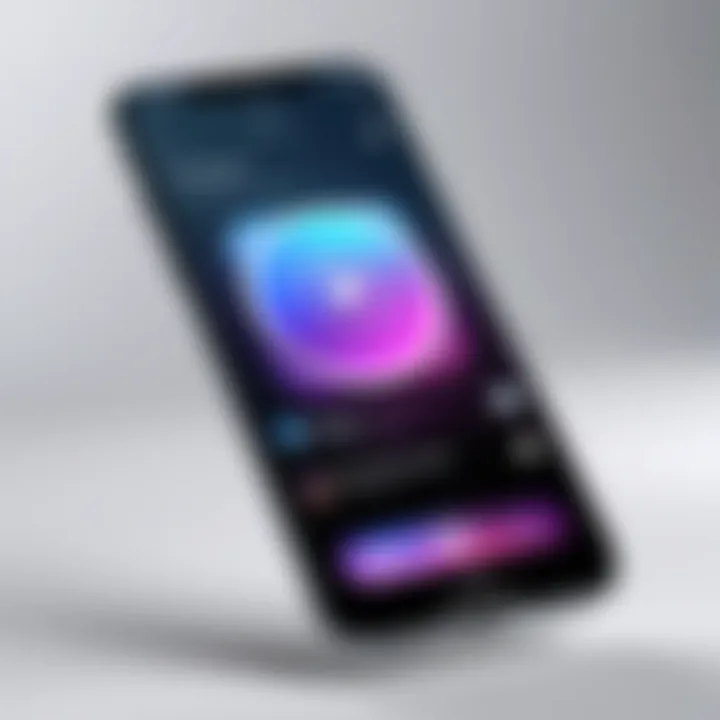
When selecting a ringtone, there are some points to consider:
- Recognition: A good ringtone should be easily recognizable, ensuring that users can identify calls quickly.
- Volume: Consider the volume of the ringtone. Some tones may sound pleasant but might be too quiet for noisy environments.
- Personal Preference: Ultimately, it should resonate with the user's personal taste or style.
These factors make choosing the right default ringtone a significant task. In the end, it influences how effectively users respond to calls.
Creating Unique Vibration Patterns
In addition to sounds, iPhone users can create unique vibration patterns. This feature allows for discreet notifications, which can be particularly useful in situations where sound is inappropriate.
To create a custom vibration, go to Settings > Sounds & Haptics > Ringtone. Tap Vibration, and then select Create New Vibration. Here, users can tap their desired rhythm on the screen. The ability to set different vibrations for various contact groups or events can help users differentiate who is calling or the type of notification received without looking at the device.
Consider the following when creating a unique vibration pattern:
- Subtlety: Ensure the vibration is subtle enough for public spaces.
- Recognition: Like the sound, it should be distinguishable enough for users to recognize a specific contact or notification type.
Implementing these features emphasizes the capability for deep personalization of the iPhone. Such options elevate users' experiences, allowing them to engage with their devices in a manner that feels uniquely tailored to them.
"Utilizing built-in sounds and creating custom vibrations not only enhances usability but also fosters a deeper relationship with your device."
Ensuring that each notification is distinctive alleviates confusion and improves overall communication effectiveness.
Troubleshooting Common Issues
When customizing ringtones for iPhone, users can encounter various issues that may disrupt the experience. Addressing these common problems is crucial because it ensures that the customization process is smooth and effective, allowing users to enjoy their personalized ringtones without frustration. This section focuses on specific common issues users might face, offering insights and solutions to enhance their overall experience.
Ringtone Not Appearing on iPhone
A common problem that many users face is the ringtone not appearing on their iPhone. This issue can stem from several factors, including syncing errors, file format issues, or incorrect settings. To troubleshoot this problem effectively, consider the following steps:
- Check the Syncing Process: Ensure that the ringtone was successfully synced to the device. Sometimes, the syncing might not complete due to disconnection or other errors during the process.
- File Format Compatibility: Verify that the ringtone is in a compatible format, such as .m4r. If the file format is incorrect, the iPhone will not recognize it as a valid ringtone.
- Restart Your Device: A simple restart can resolve minor glitches that may prevent the ringtone from appearing. Turn your device off, wait a few seconds, then turn it back on.
In case these steps do not rectify the problem, it may be necessary to remove and re-import the ringtone using iTunes or GarageBand.
Volume and Notification Settings
Another potential issue relates to volume and notification settings. If the ringtone is set correctly but still does not sound, it may be due to the device being on silent mode or the volume level being too low. To address this, users should:
- Check the Mute Switch: Ensure the mute switch on the side of the iPhone is in the off position. A red indicator shows that the device is muted.
- Adjust the Ringer Volume: Increase the ringer volume by going to Settings > Sounds & Haptics. Swipe to change the volume level.
- Set the Ringtone for Specific Contacts: Sometimes, a specific contact may be assigned a different tone. Confirm the contact settings to ensure the chosen ringtone is applied.
By systematically addressing these common troubleshooting issues, users can significantly enhance their experience with custom ringtones on iPhone. Proper understanding and handling of these elements will ensure that personalization adds to the enjoyment of the device.
Epilogue
Setting a sound as a ringtone on an iPhone offers users a unique way to express their individuality while enhancing their mobile experience. Through various methods such as iTunes, GarageBand, and the built-in settings on the iPhone, anyone can easily customize their ringtone to suit their preferences. The significance of this personalization is not merely aesthetic; it allows users to create an emotional connection with their device.
Recap of Key Steps
To summarize the critical steps discussed in this article:
- Understanding Ringtones: A clear grasp of what a ringtone is and the reasons for customization.
- Tools and Applications: Familiarity with iTunes and GarageBand, as well as using the iPhone settings for customization.
- Setting Ringtones via iTunes: Preparing audio files, importing them into iTunes, and syncing with your iPhone.
- Creating Ringtones with GarageBand: Importing, editing, and exporting sounds effectively.
- Using Built-in Sounds: Exploring default ringtones and potential for unique vibration patterns.
- Troubleshooting Issues: Common problems users face when applying new ringtones, including syncing issues and sound settings.
This process not only enhances the functionality of the iPhone but also caters to personal tastes, making incoming calls feel more pleasant and distinct.
Encouragement for Personalization
Encouraging personalization of ringtones is important, as it reflects individual tastes and preferences. Each user has a different sound that resonates with them, creating a sense of familiarity and comfort. Experimenting with various tones and vibrations can also be a fun and engaging experience. Why settle for generic sounds when you can create something unique to you?
Whether through a favorite song or a sound that has special meaning, the ability to customize a ringtone can significantly improve overall satisfaction with the device. Embrace the opportunity to express yourself through personalized ringtones, turning ordinary notifications into memorable moments.
"Personalization transforms the device experience, creating a deeper emotional connection."
By taking these steps, not only will you enhance the usability of your device, but you will also create a ringtone that truly represents your identity and style.







